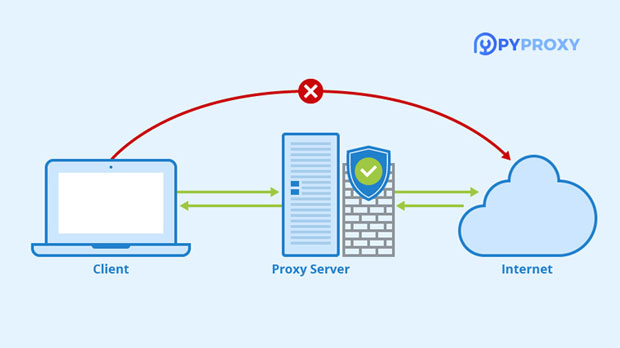In the dynamic world of Search Engine Optimization (SEO), the efficiency of web crawlers is crucial for gathering data, analyzing competitors, and ensuring website rankings. HTTP proxies play an essential role in improving the effectiveness of these crawlers by providing anonymity, avoiding rate limits, and bypassing geographic restrictions. PYPROXY and RapidSeedbox are two significant players in the HTTP proxy market. This article will provide a comprehensive comparison between PyProxy and RapidSeedbox, analyzing their performance, features, and practical applications in SEO crawling. Understanding HTTP Proxies in SEO CrawlingBefore diving into the comparison between PyProxy and RapidSeedbox, it is essential to understand the fundamental role of HTTP proxies in SEO crawling. Web crawlers, the backbone of search engine algorithms, need to access and index millions of web pages. However, certain limitations, such as rate-limiting, IP bans, and geolocation restrictions, can hinder this process. HTTP proxies serve as intermediaries that mask the crawler's real IP address, allowing it to access restricted content, bypass rate limits, and conduct more extensive data gathering.In SEO, proxies are primarily used for:1. Scraping Competitor Data: SEO specialists often scrape competitors’ websites to gather data for comparison and analysis.2. Indexing New Content: SEO crawlers need to frequently visit pages to ensure that newly published content is indexed.3. Avoiding IP Bans: Large-scale crawling can trigger IP blocks from websites; proxies help avoid these by rotating IPs.Now, let’s examine how PyProxy and RapidSeedbox stand out in the realm of SEO crawling.PyProxy: Features and BenefitsPyProxy is a highly versatile HTTP proxy service known for its scalability and advanced features. This service is specifically designed for individuals and businesses that require high-performance proxies for web scraping and SEO crawling tasks.1. High-Speed PerformanceOne of the standout features of PyProxy is its high-speed proxy network. PyProxy offers reliable and fast proxies, ensuring that web crawlers can access content without significant delays. This speed is vital in SEO crawls, where time is often a factor in collecting data across thousands or millions of web pages.2. Rotating IPsPyProxy excels in rotating IP addresses, making it less likely that crawlers will be blocked or rate-limited. By regularly changing the IP address from which the crawler accesses data, PyProxy ensures continuous and seamless scraping without interruptions. This feature is invaluable in SEO, where large-scale data collection is necessary.3. Geolocation-Based ProxiesPyProxy provides geolocation-based proxies, allowing users to choose proxies from specific countries or regions. This feature is critical in SEO when businesses need to monitor how their site performs in different geographic locations or analyze competitors from specific regions.4. Privacy and AnonymityIn SEO crawling, maintaining privacy is essential to avoid getting blocked or flagged as a bot. PyProxy guarantees anonymity by ensuring that crawlers operate behind various rotating proxies. This reduces the chances of detection, helping users access content with less risk.RapidSeedbox: Features and BenefitsRapidSeedbox is another powerful solution for HTTP proxy services tailored for SEO crawlers. RapidSeedbox stands out due to its reliability, ease of use, and enhanced security features, making it a popular choice for businesses that require a stable, scalable solution.1. Stability and ReliabilityOne of the primary advantages of RapidSeedbox is its stable performance. Unlike many other proxy services, RapidSeedbox offers a consistent connection, ensuring that SEO crawlers can continuously gather data without interruptions. Stability is especially important in SEO crawls, where even a brief downtime can lead to incomplete data collection.2. Diverse Proxy LocationsRapidSeedbox provides an extensive network of proxy locations worldwide. This is particularly beneficial for businesses that want to monitor their global SEO performance or target specific countries or regions. By using RapidSeedbox’s proxies, businesses can simulate local browsing behavior and gather more accurate search engine rankings.3. User-Friendly InterfaceThe user interface of RapidSeedbox is another point of distinction. With an intuitive design, users can quickly configure their proxies and set up crawlers without extensive technical knowledge. This ease of use makes it ideal for both beginners and advanced users who need a straightforward solution for SEO crawling.4. Advanced Security FeaturesRapidSeedbox also places a strong emphasis on security. The proxies are configured to provide maximum security, ensuring that crawlers and users remain undetected. This is particularly useful when scraping competitors' websites or performing sensitive SEO tasks that require discretion.Comparing PyProxy and RapidSeedbox for SEO CrawlingNow that we have explored the individual features of both PyProxy and RapidSeedbox, it is time to compare them based on key criteria relevant to SEO crawling.1. Speed and PerformanceBoth PyProxy and RapidSeedbox offer fast speeds for SEO crawlers. However, PyProxy edges out RapidSeedbox in terms of raw speed, especially when it comes to handling high-volume crawls. PyProxy’s rotating IPs and dedicated bandwidth ensure that crawlers can access content quickly without delays. RapidSeedbox, while reliable, might experience slight lag during peak usage times due to its focus on overall stability.2. Proxy Location VarietyFor businesses targeting specific geographic regions, both services offer geo-targeted proxies. PyProxy’s geolocation-based proxies are particularly beneficial for localized SEO tasks, allowing businesses to track their performance in different countries. However, RapidSeedbox’s global proxy network is broader, offering a more extensive selection of locations.3. Ease of UseWhile PyProxy is a powerful tool, it requires more technical expertise to set up and manage compared to RapidSeedbox. RapidSeedbox’s user-friendly interface allows even beginners to set up proxies and start crawling with ease. If ease of use is a priority, RapidSeedbox offers a more accessible solution for SEO crawlers.4. Cost and ScalabilityPyProxy and RapidSeedbox differ significantly in terms of pricing models. PyProxy typically offers more flexible and scalable pricing based on usage, which is beneficial for large-scale projects. RapidSeedbox, on the other hand, is more suitable for small to medium-sized businesses due to its predictable pricing structure. For those with larger budgets or long-term SEO goals, PyProxy’s scalability makes it the better choice.5. Security and PrivacyWhen it comes to security and privacy, both PyProxy and RapidSeedbox excel. PyProxy’s rotating IPs and anonymous browsing ensure that SEO crawlers remain undetected, minimizing the risk of bans or blocks. RapidSeedbox also prioritizes security but places additional emphasis on ensuring the reliability of connections, which makes it an excellent choice for businesses focused on stability and long-term crawling.Conclusion: Which Service Is Better for SEO Crawling?Both PyProxy and RapidSeedbox provide valuable services for SEO crawling, but the right choice ultimately depends on your specific needs.- If you require advanced features like rotating IPs, high-speed performance, and scalability for large-scale SEO crawls, PyProxy is the better choice.- On the other hand, if you prioritize ease of use, stability, and a user-friendly interface, RapidSeedbox is an excellent option for businesses with smaller, more manageable SEO crawling tasks.Ultimately, both services offer robust solutions that can enhance your SEO strategy, and the best choice will depend on your budget, technical capabilities, and the scope of your SEO projects.
Sep 18, 2025



































































